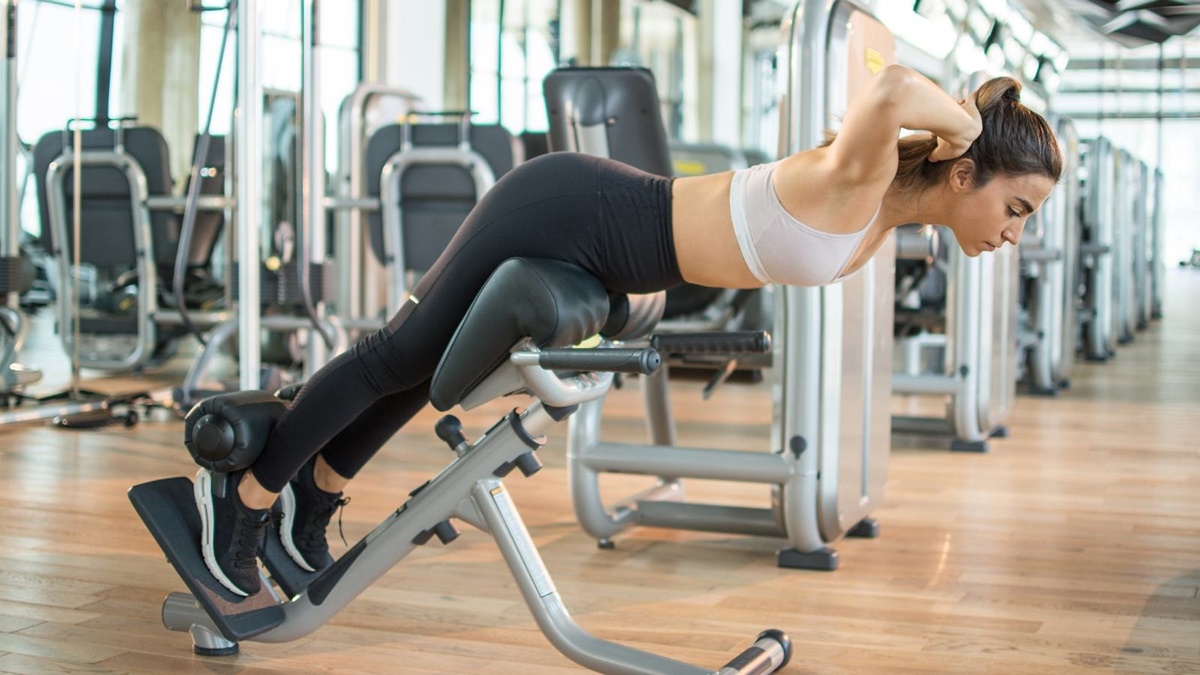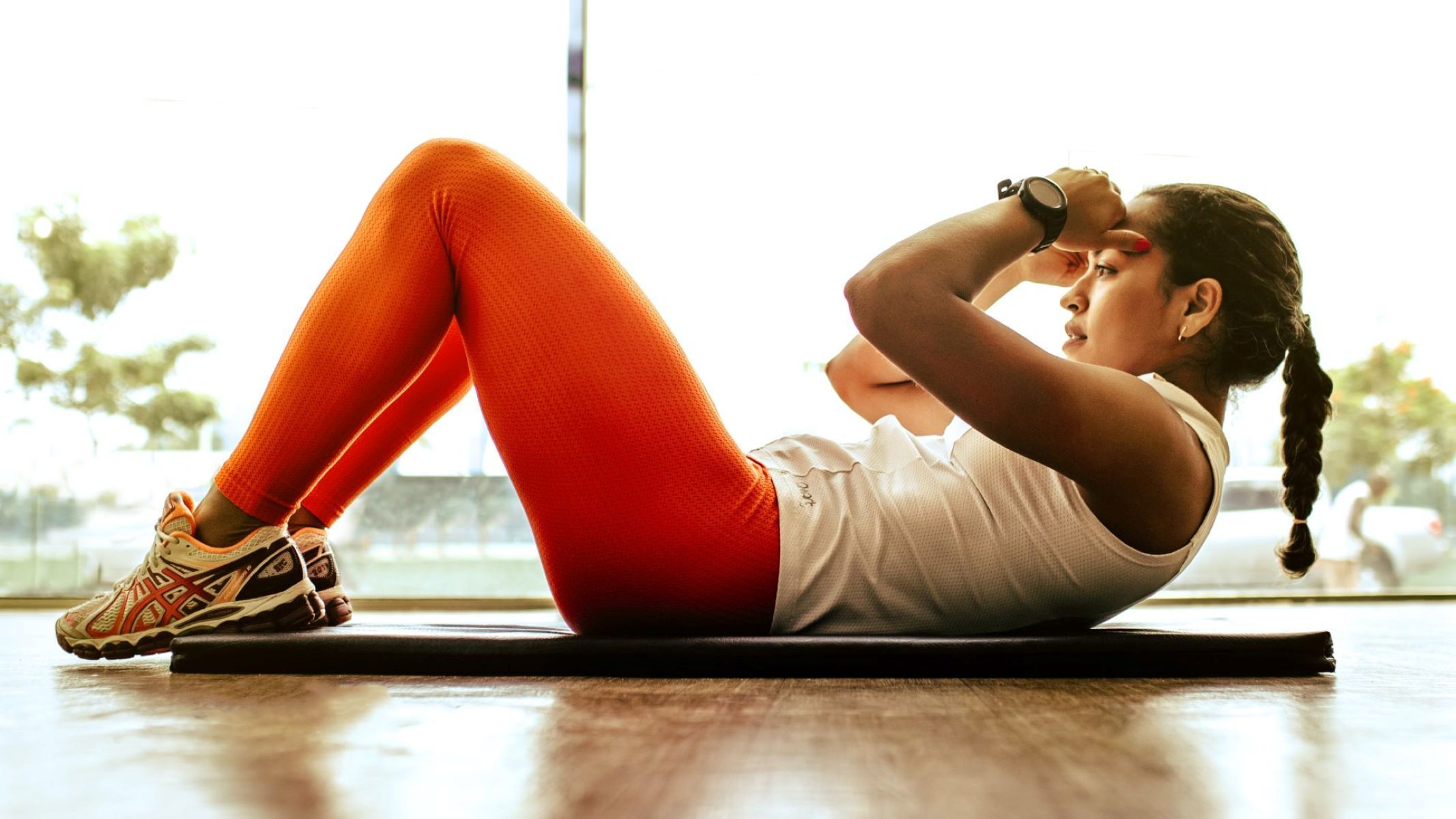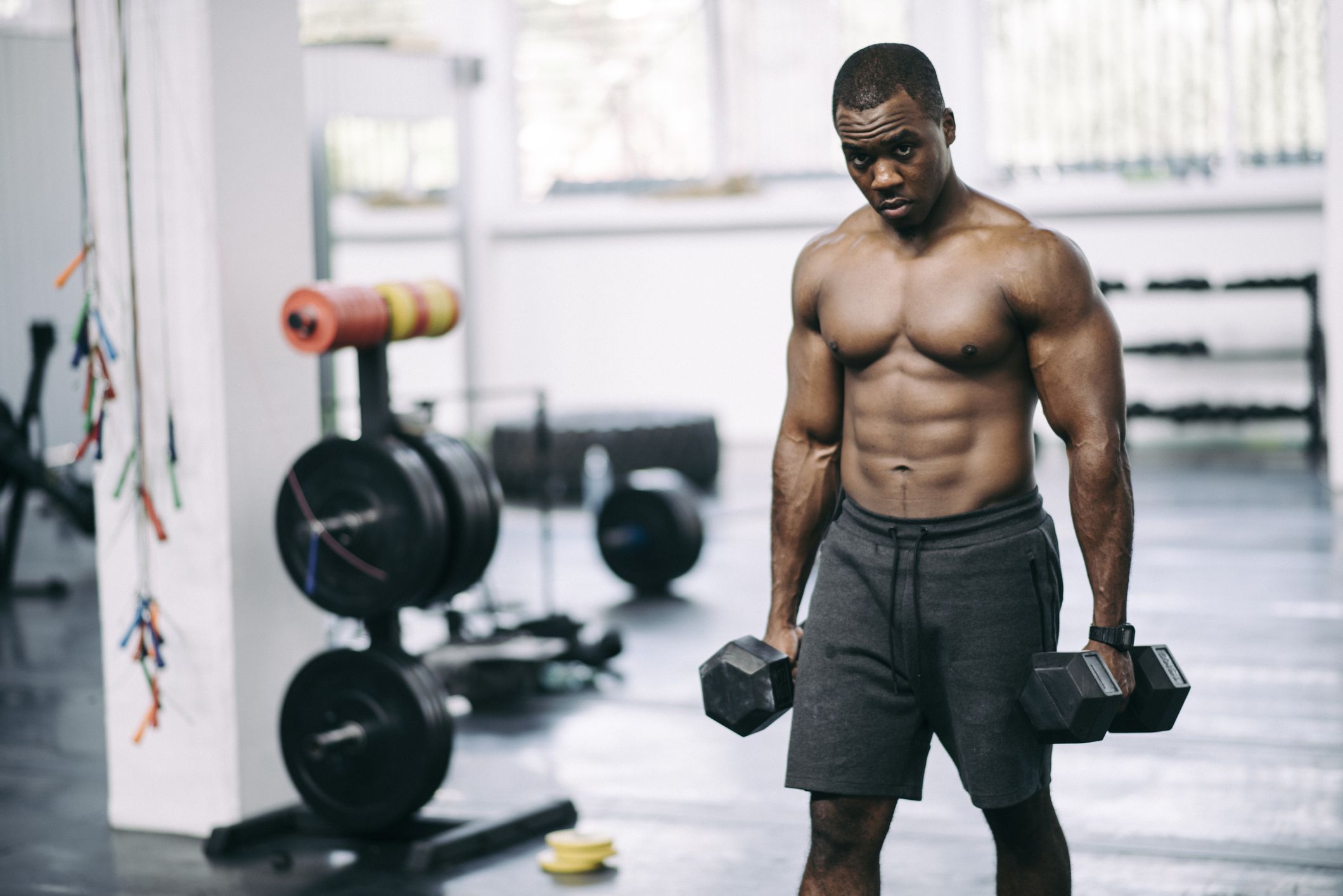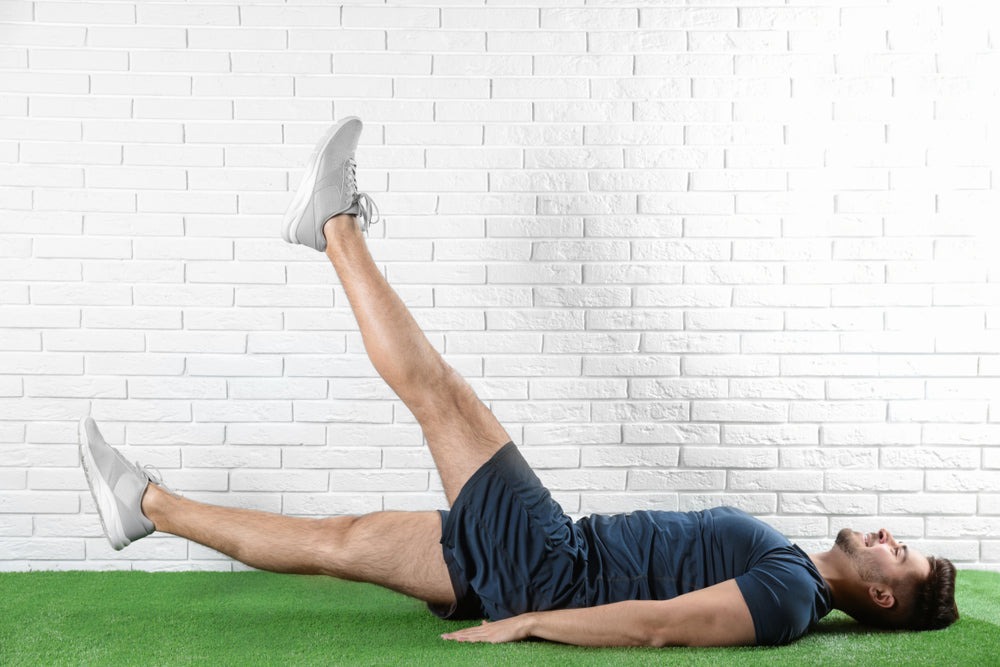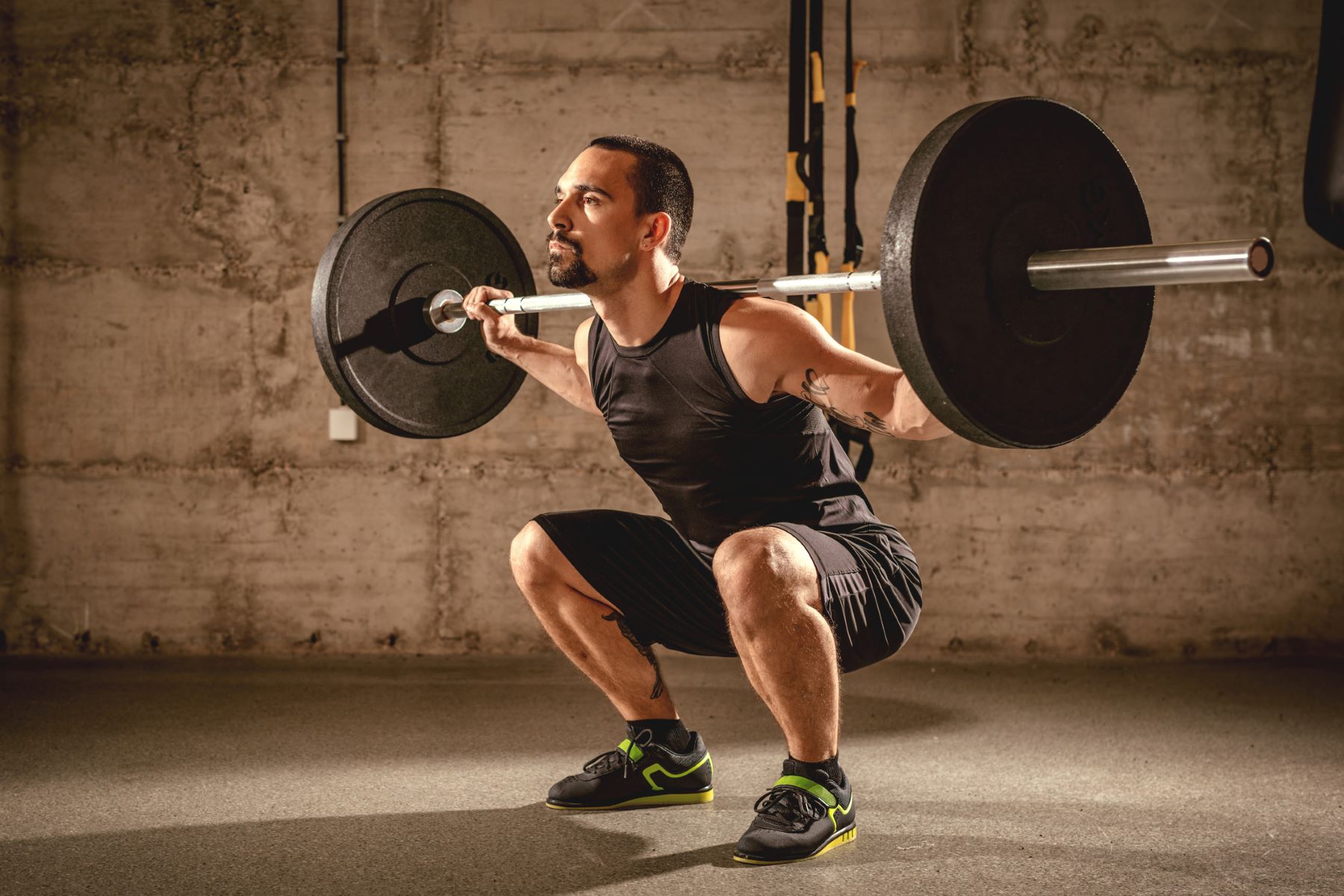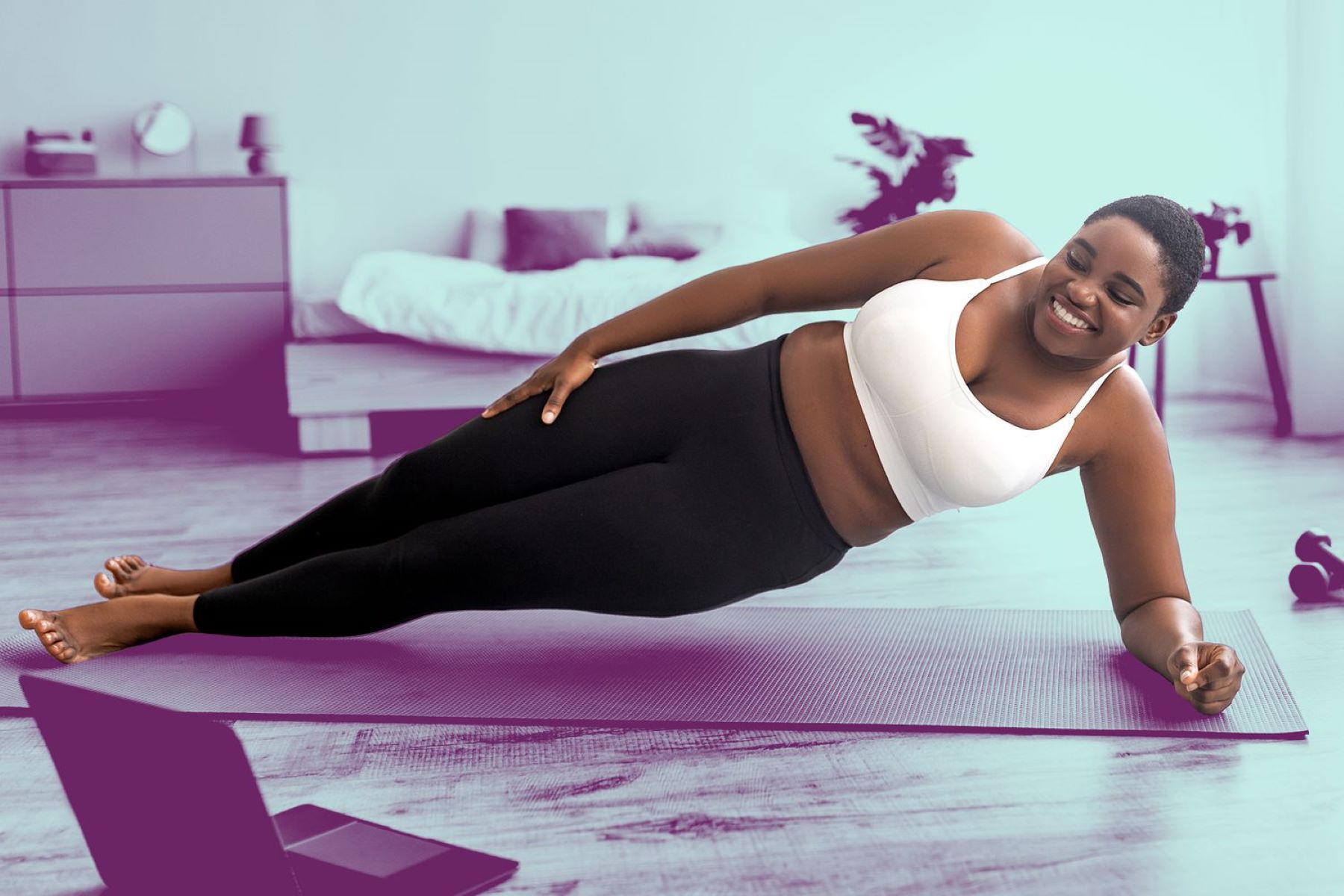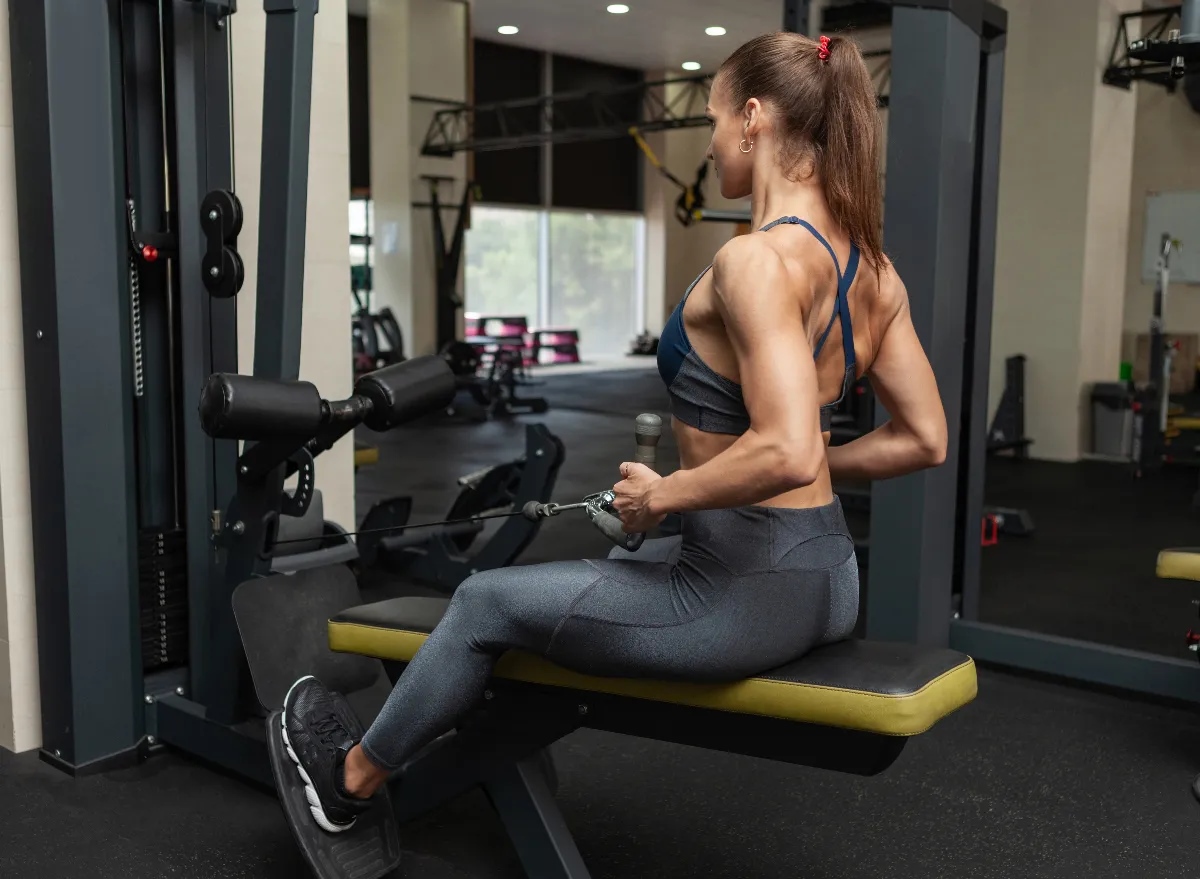

Featured
How To Workout Lower Abs
Modified: August 19, 2023
Learn how to effectively target and strengthen your lower abs with our featured workout routine. Get the toned and defined abs you've always wanted.
Introduction
The lower abs are often considered a trouble spot for many people. These are the muscles located below the belly button, and they can be difficult to tone and strengthen. However, with the right exercises and a consistent workout routine, you can achieve well-defined lower abs and improve your overall core strength.
In this article, we will explore the importance of working out the lower abs, discuss basic and advanced exercises that target these muscles, provide tips for effective lower ab workouts, and highlight common mistakes to avoid. Whether you’re a beginner or have some experience in fitness, this article will help you develop a solid lower ab workout routine.
Working out the lower abs not only contributes to a flatter and more toned stomach but also improves overall stability and balance. These muscles, known as the rectus abdominis and transverse abdominis, play a crucial role in supporting the spine and maintaining proper posture.
It’s important to note that spot reduction is not possible, meaning you can’t specifically target fat loss in the lower abdominal area. However, by strengthening and building the lower abs, you can create a more defined appearance as you reduce overall body fat through a combination of healthy eating and regular exercise.
Now that you understand the significance of working out the lower abs, let’s dive into some basic exercises that will help you get started on your journey to a stronger core.
Understanding the Lower Abs
Before we jump into the exercises, it’s important to have a clear understanding of the lower abs and their role in your overall core strength. The lower abs refer to the lower portion of the abdominal muscles, specifically the rectus abdominis and transverse abdominis.
The rectus abdominis is a pair of long, flat muscles that run vertically along the front of the abdomen. It is responsible for flexing the spine and helps to stabilize the pelvis. The lower section of the rectus abdominis, often referred to as the lower abs, is the area below the belly button.
The transverse abdominis, on the other hand, is a deep muscle that wraps around the abdomen like a corset. It provides stability and support to the spine and organs. It acts as a natural weight belt, helping to protect the lower back and maintain good posture.
Understanding the lower abs is essential because it allows you to focus your workouts on these specific muscles. By targeting the lower abs, you can strengthen and tone this area, sculpting a more defined midsection.
It’s important to note that everyone’s genetics and body composition are different. Some individuals may naturally have stronger or more visible lower abs, while others may need to put in more effort to see results. However, with consistent training and the right exercises, anyone can develop stronger lower abs.
In addition to exercises, proper nutrition and overall body fat reduction are also important factors in revealing the lower abs. While exercise can strengthen and tone your abdominal muscles, a healthy diet and regular cardiovascular exercise are crucial for reducing body fat and achieving a leaner physique, making your lower abs more visible.
Now that you have a better understanding of the lower abs, let’s move on to the importance of working out this muscle group.
Importance of Working Out the Lower Abs
Working out the lower abs is vital for several reasons. Not only does it contribute to a toned and sculpted midsection, but it also plays a crucial role in overall core strength and stability.
One of the main benefits of targeting the lower abs is the improvement in posture. The lower abs, specifically the transverse abdominis, act as a natural weight belt, providing support to the spine and helping to maintain proper alignment. Strong lower abs can help alleviate lower back pain and prevent injuries by stabilizing the pelvis and reducing the strain on the back.
Additionally, a strong lower abdominal area enhances overall core strength. The core muscles, including the lower abs, work together to support and stabilize the torso during various movements and activities. Whether you’re performing everyday tasks like bending and lifting or engaging in more intense activities like sports or fitness routines, a strong core is essential for optimal performance and injury prevention.
Furthermore, working out the lower abs enhances functional movements and improves athletic performance. Many sports and physical activities require powerful movements from the lower body, and a strong core, including the lower abs, provides a solid foundation for generating force and transferring energy. Whether you’re running, jumping, or performing explosive exercises, a stronger lower ab region can significantly enhance your performance.
Another reason to focus on the lower abs is for aesthetic purposes. Well-defined lower abs can give your stomach a sculpted and toned appearance. While spot reduction of fat is not possible, combining lower ab exercises with a healthy diet and overall body fat reduction can help reveal the muscle definition in this area.
Lastly, working out the lower abs adds diversity to your core training routine. Balancing your core workouts by targeting different muscles, including the lower abs, helps create a well-rounded and functional core. By incorporating a variety of exercises, you can engage different areas of the abdominal region and avoid muscle imbalances.
Now that you understand the importance of working out the lower abs, let’s explore some basic exercises that specifically target this muscle group.
Basic Lower Ab Exercises
To effectively target the lower abs, it’s important to incorporate exercises that specifically engage and activate this muscle group. Here are some basic lower ab exercises that you can incorporate into your workout routine:
- Reverse Crunches: Lie flat on your back with your hands by your side or underneath your hips. Bend your knees and lift your legs off the ground, bringing them towards your chest. As you exhale, engage your lower abs and curl your hips off the ground, bringing your knees towards your chest. Slowly lower your legs back to the starting position and repeat.
- Leg Raises: Lie flat on your back with your legs extended and your hands by your side. Keeping your legs straight, lift them off the ground until they are perpendicular to the floor. Slowly lower them back down without touching the ground and repeat.
- Bicycle Crunches: Lie flat on your back with your hands behind your head and your knees bent. Lift your shoulders off the ground and bring your left elbow towards your right knee while straightening your left leg. As you twist, bring your right knee towards your chest. Alternate sides in a bicycle motion while engaging your lower abs.
- Mountain Climbers: Start in a high plank position with your hands directly under your shoulders and your body in a straight line. Engage your core and bring your right knee towards your chest, then quickly switch legs, bringing your left knee towards your chest while extending the right leg back. Continue alternating in a running motion.
- Plank Hip Dips: Start in a forearm plank position with your elbows directly under your shoulders and your body in a straight line. Rotate your hips to the right, lowering them towards the ground, and then rotate to the left, dipping your hips. Keep your core engaged throughout the movement.
For optimal results, aim to perform 2-3 sets of each exercise, with 10-15 repetitions per set. Take breaks as needed and focus on maintaining proper form and engaging your lower abs during each repetition.
Remember, consistency is key. As you become more comfortable with these basic exercises, you can progress to more advanced lower ab exercises to continue challenging your muscles and reaching new fitness goals.
Advanced Lower Ab Exercises
If you’re looking to take your lower ab workout to the next level, incorporating advanced exercises will help you challenge your muscles and achieve greater strength and definition. Here are some advanced lower ab exercises to consider:
- Dragon Flags: Lie on a flat bench or mat with your head towards the edge. Hold onto the bench above your head and lift your legs towards the ceiling, keeping them straight. Engage your core and lower your body towards the ground, maintaining control, and then use your abs to lift yourself back up to the starting position.
- Toe-to-Bar Hanging Leg Raises: Hang from a pull-up bar with your arms fully extended and your feet off the ground. Engage your core and lift your legs up, keeping them straight, until your toes touch the bar. Slowly lower your legs back down and repeat the movement.
- Scissor Kicks: Lie on your back with your legs extended. Lift both legs a few inches off the ground and criss-cross them in a scissor-like motion, alternating which leg is on top. Keep your core engaged and control the movement throughout.
- V-Ups: Lie flat on your back with your arms extended overhead. Simultaneously lift your upper body and legs off the ground, reaching for your toes with your hands. Slowly lower your body back down, engaging your lower abs to control the movement.
- Standing Cable Woodchoppers: Attach a cable to a high pulley machine. Stand with your side facing the machine and hold the handle with both hands. Engage your core and rotate your torso while pulling the cable diagonally across your body, ending with your hands at the opposite hip. Repeat on the other side.
These advanced exercises require a higher level of strength, stability, and control. It’s essential to maintain proper form throughout each movement and focus on engaging the lower abs to maximize effectiveness.
As with any exercise, it’s important to listen to your body and progress at a pace that is appropriate for your fitness level. Start with a few sets of each exercise and gradually increase the intensity and volume over time.
Remember to always warm up before attempting advanced exercises and cool down properly after your workout. Stretching and foam rolling can help prevent muscle tightness and reduce the risk of injury.
Now that you have some advanced lower ab exercises in your arsenal, let’s move on to some valuable tips to help you get the most out of your lower ab workouts.
Tips for Effective Lower Ab Workouts
When it comes to working out the lower abs, there are several tips and strategies that can help you maximize the effectiveness of your workouts. Incorporate these tips into your routine to achieve better results and see progress in your lower ab strength and definition:
- Maintain Proper Form: It’s essential to focus on your form during lower ab exercises. Keep your core engaged, spine aligned, and avoid swinging or using momentum to complete the movements. Quality over quantity is key when it comes to working the lower abs effectively.
- Breathe and Engage: Remember to breathe throughout each exercise, exhaling as you engage your lower abs and inhaling as you release. Proper breathing helps optimize muscle activation and control during the movements.
- Progress Gradually: Start with basic exercises and gradually progress to more advanced ones. Building a strong foundation and gradually increasing the intensity will help prevent injury and ensure steady progress in your lower ab strength.
- Include Variety: Don’t rely solely on one or two exercises. Incorporate a variety of lower ab exercises to target the muscles from different angles and prevent adaptation. This will challenge your muscles and promote overall development.
- Combine with Cardio and Full-Body Workouts: While targeted lower ab exercises are important, incorporating cardio and full-body workouts into your routine is crucial for overall fat loss and revealing the muscles underneath. This combination will help you achieve a toned and defined midsection.
- Be Consistent: Consistency is key when it comes to achieving results. Aim for regular lower ab workouts, at least two to three times per week, to maintain progress and continue challenging your muscles.
- Listen to Your Body: Pay attention to any discomfort or pain during exercises. If something doesn’t feel right, modify or adjust the movement to avoid injury. It’s important to challenge yourself, but never push beyond your limits.
- Stay Hydrated and Fuel Your Body: Proper hydration and nutrition are essential for any workout. Drink plenty of water and fuel your body with a balanced diet, including lean protein, healthy fats, and complex carbohydrates, to provide the energy needed for your workouts.
By incorporating these tips into your lower ab workouts, you’ll be able to optimize your efforts, challenge your muscles, and achieve better results. Now, let’s discuss some common mistakes to avoid when working out the lower abs.
Mistakes to Avoid When Working Out Lower Abs
While working out the lower abs is beneficial for core strength and definition, there are common mistakes that people often make that can hinder their progress. By being aware of these mistakes and avoiding them, you can ensure that your lower ab workouts are effective and efficient. Here are some mistakes to watch out for:
- Neglecting Proper Form: One of the most common mistakes is sacrificing form for the sake of completing more repetitions. It’s important to maintain proper form and control throughout each movement, focusing on engaging the lower abs and not relying on momentum or swinging.
- Using Your Hip Flexors Instead: When performing lower ab exercises, it’s crucial to isolate and engage the lower abs instead of relying on your hip flexors. Pay attention to your form and make sure you’re actively using the lower abs to perform the movements.
- Not Engaging the Core: Engaging the core is essential for effective lower ab workouts. Failing to engage the core can result in decreased muscle activation and reduced effectiveness of the exercises. Focus on drawing the belly button towards the spine and maintaining core engagement throughout each exercise.
- Skipping Progression: Progression is important to continue challenging your muscles and making progress. Skipping progression and only sticking to easy exercises can lead to a plateau in results. Gradually increase the intensity and difficulty of your workouts to see continued improvement.
- Overtraining: While consistency is important, overtraining the lower abs can hinder your progress. Allow sufficient rest and recovery time between workouts to allow your muscles to repair and grow.
- Ignoring the Rest of the Core: The core is a complex group of muscles that includes more than just the lower abs. Neglecting exercises that target other core muscles, such as the obliques and transverse abdominis, can result in muscle imbalances and a less balanced midsection.
- Not Paying Attention to Breathing: Breathing plays a crucial role in muscle activation and control. Avoid holding your breath during exercises and instead focus on exhaling as you engage the lower abs and inhaling during the release phase of the movement.
- Relying Only on Lower Ab Workouts: While it’s important to target the lower abs, solely focusing on lower ab exercises without incorporating full-body and cardio workouts can limit your progress. Incorporate a well-rounded fitness routine that includes a variety of exercises to achieve overall strength and functionality.
Avoiding these common mistakes will help you make the most out of your lower ab workouts and ensure that you are targeting the right muscles effectively. Now, let’s put all this knowledge into practice with a sample lower ab workout routine.
Sample Lower Ab Workout Routine
Now that you have an understanding of the lower abs, their importance, and the common mistakes to avoid, let’s put everything into action with a sample lower ab workout routine. This routine is designed to target and strengthen the lower abs effectively. Remember to warm up before starting and cool down afterwards to prevent injury and promote recovery.
1. Reverse Crunches: 3 sets of 12-15 reps
2. Leg Raises: 3 sets of 12-15 reps
3. Bicycle Crunches: 3 sets of 12-15 reps on each side
4. Mountain Climbers: 3 sets of 15-20 reps on each side
5. Plank Hip Dips: 3 sets of 10-12 reps on each side
Complete this routine 2-3 times per week, allowing at least one day of rest in between sessions. Focus on maintaining proper form, engaging the lower abs, and controlling the movements. As you become more comfortable and stronger, you can increase the number of sets, reps, or difficulty of the exercises to continue progressing.
Remember to listen to your body and modify exercises as needed. If you experience any pain or discomfort, consult with a fitness professional or healthcare provider.
In addition to this targeted lower ab workout, it’s essential to include full-body strength training exercises and cardiovascular workouts in your routine. This will help with overall fat loss and reveal the muscles underneath.
Stay consistent, be patient, and enjoy the journey. With dedication and the right approach, you’ll see progress in your lower ab strength and achieve a toned and defined midsection.
Now that you have a solid understanding of the lower abs, their importance, and how to effectively work them out, it’s time to put this knowledge into practice and start sculpting those lower abs!
Conclusion
Working out the lower abs is essential for achieving a toned and defined midsection while improving core strength and stability. By understanding the anatomy and role of the lower abs, you can effectively target these muscles and maximize your results.
In this article, we discussed the importance of working out the lower abs and how it contributes to better posture, enhanced functional movements, and improved athletic performance. We explored a range of basic and advanced exercises that specifically target the lower abs, providing you with a variety of options to incorporate into your workout routine.
We also provided tips for effective lower ab workouts, including maintaining proper form, breathing, progressing gradually, and incorporating variety and rest. By following these tips and avoiding common mistakes, you can optimize your lower ab workouts and achieve better results.
Additionally, we shared a sample lower ab workout routine that you can use as a starting point. Remember to customize the routine to your fitness level and gradually increase the intensity as you progress.
Finally, it’s important to remember that working out the lower abs is just one component of a well-rounded fitness regimen. Incorporating full-body strength training exercises, cardiovascular workouts, and a balanced diet will contribute to overall fat loss and reveal the muscles underneath.
So, take the knowledge and tips provided in this article, put them into action, stay consistent, and enjoy the process of sculpting your lower abs. With determination and dedication, you’ll be well on your way to achieving a strong, toned, and defined midsection.
